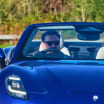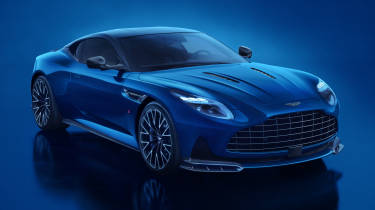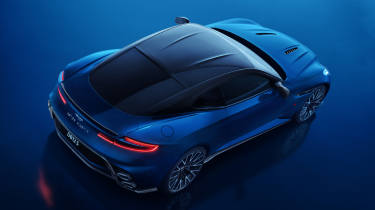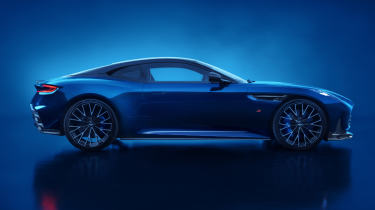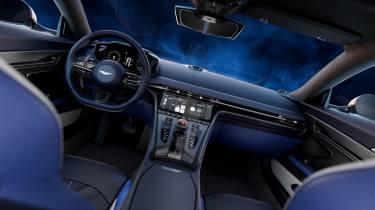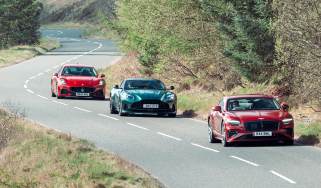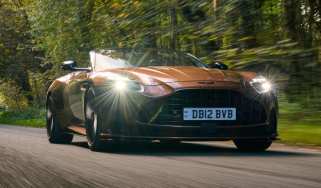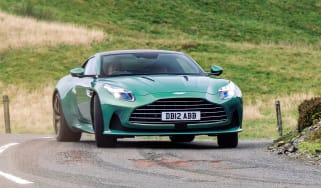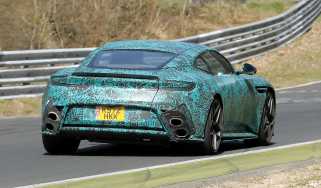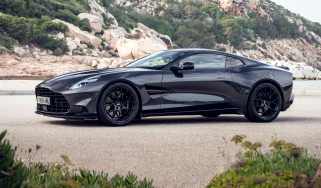New Aston Martin DB12 S is a tightened grand tourer riposte to the Ferrari Amalfi
Tweaks under the more aggressive skin could make the new DB12 S the core grand tourer Aston needs
Aston Martin’s range expansion continues. The new DB12 S is following in the footsteps of the DBX S and Vantage S by offering buyers more choice and a hierarchy through which to climb.
If the Vantage and DBX707 weren’t in dire need of revisions, the DB12 was ripe for the nip and a tuck it's received in S guise.
The changes could elevate what was probably the car in Aston’s range with the most room for improvement. The DB12 S’s arrival is timely too, given the imminent introduction of Ferrari’s Amalfi, and Bentley’s full realisation of the Continental GT range with the ‘standard’ car now joining the Speed.
Power from the M177 Mercedes-AMG 4-litre twin-turbo has been gently massaged, with the DB12 S is now 692bhp (or a nice clean 700PS), up from 671bhp, delivered from 6000rpm. Torque remains at 590lb-ft though it arrives at 3000rpm, rather than 2750rpm, and rides out to 6000rpm.
The transmission calibration is revised for 50 per cent improvements in shift speed, aiding the jump from 0 to 62mph by 0.1sec to 3.5sec. Top speed is 202mph. The throttle pedal calibration has been revised for better progression too.
The chassis is probably where the DB12 could stand to improve the most. The car never quite settled as a GT could, nor tied itself down sufficiently for the most dynamic situations. Improvements to this end should come courtesy of software changes to the Bilstein DTX dampers for improved roll and pitch control.
The geometry across the camber, toe and castor is revised and there’s a new, stiffer anti-roll bar. There’s been more bite coded into the e-LSD too, allowing you to jump on the power earlier in a corner and activate the rear axle for a more agile feel.
Carbon ceramic brakes are standard, offering greater endurance and a useful 27kg reduction in unsprung weight. Next-generation corner braking control works with brake slip control to pass braking forces between the wheels for optimum stability when really anchoring up, and more eagerness to find a tighter line.
Lastly you might note that the DB12 S has a more rorty exhaust note than the standard DB12. A new sound has been tuned to make the V8 more expressive across the rev range. A titanium system is optional, adding bass and raising volume by 1.5db, while saving 11.7kg.
> New Aston Martin Vantage S revealed – Ferrari Amalfi rival is more powerful and focused
That sound is also coming from a much more aggressive exhaust design – stacked horns first seen on the DBX S bring back memories of the much maligned Ferrari California, far from the prettiest of Ferraris. They were striking on the prototypes but with a fully revealed rump, we can now see an aggressive carbon valance between them. Elegant? No, but further distinction from the DB11 that the DB12 replaced is a good thing.
On the bootlid there’s a ducktail lip akin to that seen on the last DBS. There are new 21-inch wheels dressed in Aston-spec Michelin Pilot Sport S 5 tyres. Behind the front wheels are red S badges, while broader sill lines feed into the new front splitter, with aggressive flanking elements.
There are nominal aero benefits to the spoiler and splitter, says Aston, though no figures are given. Just ‘improved high speed stability’. New bonnet louvres vent hot air upwards from the V8. Inside the slightly sportier options of the Vantage S cabin are mirrored for the DB12 S.
> New 2026 Ferrari Amalfi revealed – physical buttons return in the 631bhp Roma replacement
Aston has form with making small changes that make a big difference. Here the DB12 S has the chance to be the car we’d always hoped the DB12 would be. Of course, we won’t know for sure until we get it on UK roads and see how things stand in the super GT landscape next to Ferrari’s Amalfi.
Order books are open now for both the DB12 S Coupe and Volante with prices from c£220k and deliveries beginning in the first quarter of 2026.
